Abstract
The following is an overview of fruit vegetable production in Japanese agriculture, particularly summer/autumn eggplant production. The 2022 harvest volume nationwide will be a maximum of 180kt, the cultivated area will be a maximum of 6.92kha, and Gunma will have the highest shipping volume of 19.1kt. These data suggest that eggplant production in Japan is relatively stable, with high yields and planted areas. With Gunma having the largest shipping volume, it can be seen that there is a production center in each region. Additionally, summer/autumn eggplants may be in higher demand than crops grown in other seasons, which may be leading to increased production and shipping volumes. Overall, eggplant production plays an important role in Japanese agriculture, with each region producing eggplants with distinctive characteristics.
Summer and autumn eggplant harvest yields (main data).
The summer/autumn eggplant harvest in Japanese agriculture reached a national peak of 593kt in 1973. However, it has declined gradually over the following decades, falling to about 30.4% of its peak in 2022. This trend is likely due to structural changes in agriculture and changes in market demand. In particular, factors such as the reduction in farmland, the aging of farmers, and the progress of urbanization may be having an impact. Other factors that may be contributing include changes in consumer eating habits and foreign competition. Under these circumstances, agricultural policies and technological innovations are becoming important factors, and efforts are being called for to ensure the sustainability of summer/autumn eggplant harvests.
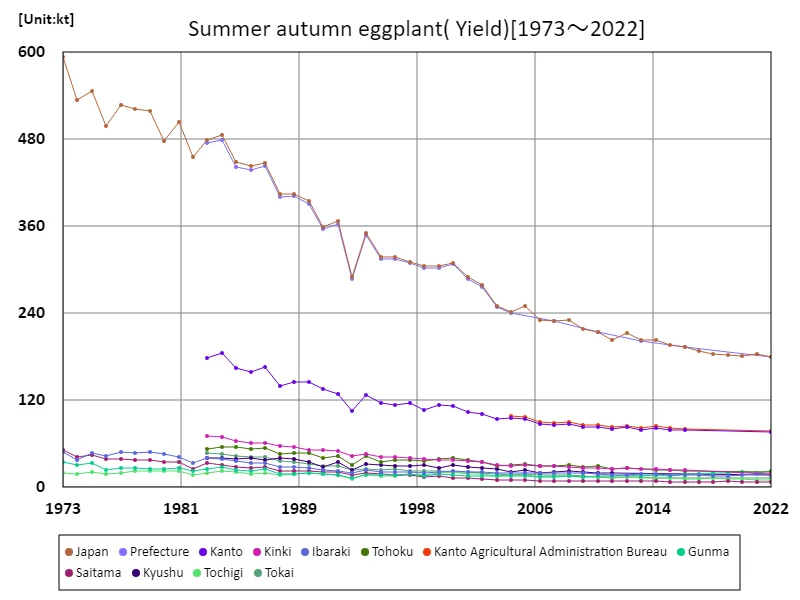

The maximum is 593kt[1973] of Japan, and the current value is about 30.4%
Summer and autumn eggplant harvest volumes (by prefecture).
According to the latest prefecture-by-prefecture data for 2022, Gunma recorded the highest overall fruit vegetable harvest in Japan, achieving 22.1 kt. This suggests that Gunma is a particularly outstanding region for fruit and vegetable production. Given past trends, other regions may have been active producers, but 2022 sees Gunma come out on top. In addition, since fruit vegetable harvest yields vary from prefecture to prefecture, it is believed that differences in regional climatic conditions and agricultural techniques affect production. Furthermore, fruit vegetables are in high demand and competition among producing areas is fierce, so regional characteristics and competitiveness are important. In the future, building production systems that make use of the characteristics of each region and technological innovation will likely be important factors in increasing Japan’s fruit and vegetable harvests.
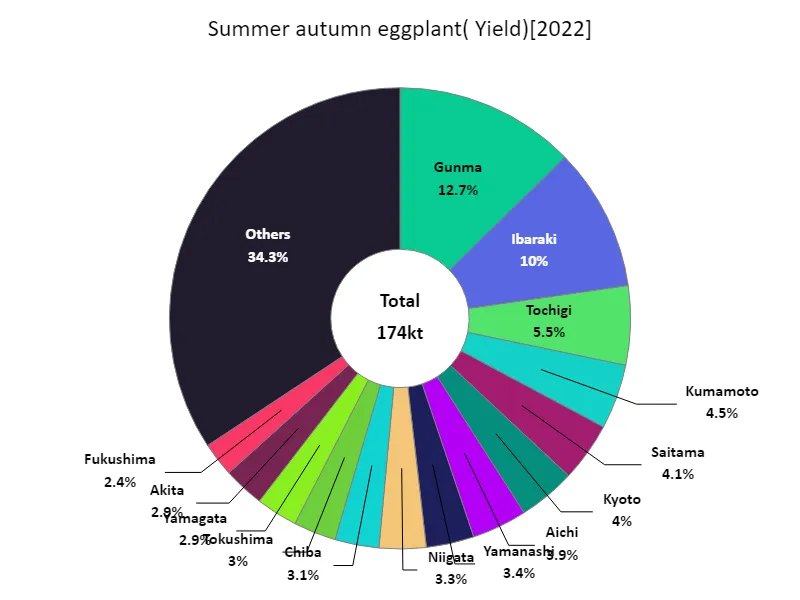

The maximum is 22.1kt of Gunma, the average is 3.87kt, and the total is 174kt
Area planted with summer and autumn eggplant (main data).
The area of land cultivated with summer/autumn eggplant in Japanese agriculture peaked nationwide in 1973 at 23.1 kha. However, it has declined gradually over the following decades and is now at around 30% of its peak. This trend is likely due to structural changes in agriculture and changes in market demand. In particular, factors such as the reduction in farmland, the aging of farmers, and the progress of urbanization may be having an impact. Additionally, cultivating summer/autumn eggplant requires a lot of effort and skill, which may be affecting farmers’ motivation and reducing production. Additionally, changes in agricultural policies and markets may also be affecting acreage. Under these circumstances, efforts are needed to ensure the sustainability of the cultivated area of summer-autumn eggplant.
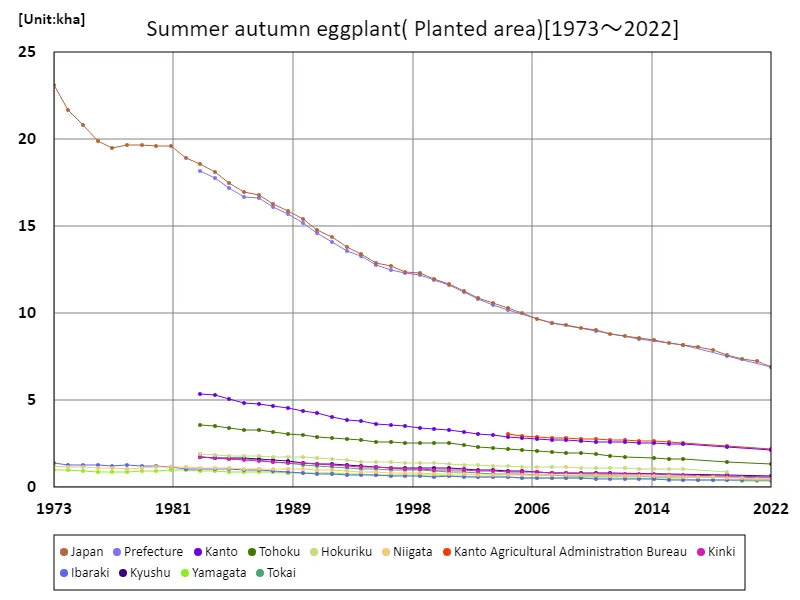

The maximum is 23.1kha[1973] of Japan, and the current value is about 30%
Areas cultivated for summer/autumn eggplant (by prefecture).
According to the latest data for 2022 by prefecture regarding the area of land devoted to fruit vegetables in Japanese agriculture, Niigata has the largest area overall, accounting for 455 hectares. This data is noteworthy and suggests that Niigata is a particularly good region for fruit and vegetable production. Considering past trends, other regions may have also been active in producing fruit and vegetables, but in 2022, Niigata appears to have risen to the top. In addition, since the area of land cultivated with fruit vegetables varies from prefecture to prefecture, it is thought that differences in regional climatic conditions and agricultural techniques affect production. Furthermore, fruit vegetables are in high demand and competition among producing areas is fierce, so regional characteristics and competitiveness are important. Going forward, the creation of production systems that make use of the characteristics of each region and technological innovation will likely be important factors in increasing the cultivated area of fruit vegetables in Japan.
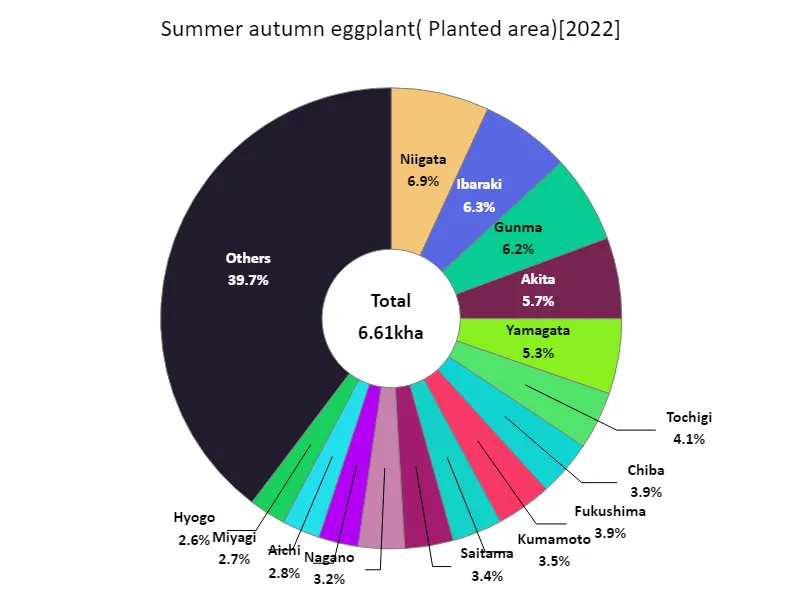

The maximum is 455ha of Niigata, the average is 147ha, and the total is 6.61kha
Summer and autumn eggplant shipping volumes.
According to the latest data for 2022 regarding the shipment volume of summer/autumn eggplant in Japanese agriculture, the highest overall volume was Gunma at 19.1kt, the average was 2.78kt, and the total was 125kt. This shows that Gunma is particularly outstanding in terms of regional production of summer/autumn eggplant. Given past trends, other regions may have been active producers, but 2022 sees Gunma come out on top. In addition, since the shipping volume of summer and autumn eggplants varies from region to region, it is thought that differences in the climatic conditions and agricultural techniques of the producing areas affect the shipping volume. Furthermore, summer/autumn eggplant is a vegetable with high demand and competition is fierce, so regional distinctiveness and competitiveness are important. In the future, building production systems that take advantage of the characteristics of each region and developing markets will likely be important factors in increasing summer and autumn eggplant shipments.
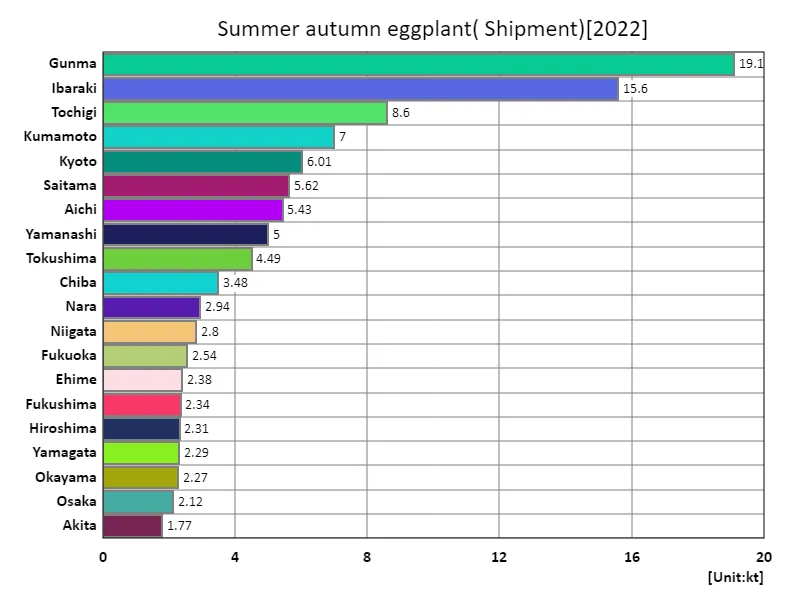

The maximum is 19.1kt of Gunma, the average is 2.78kt, and the total is 125kt
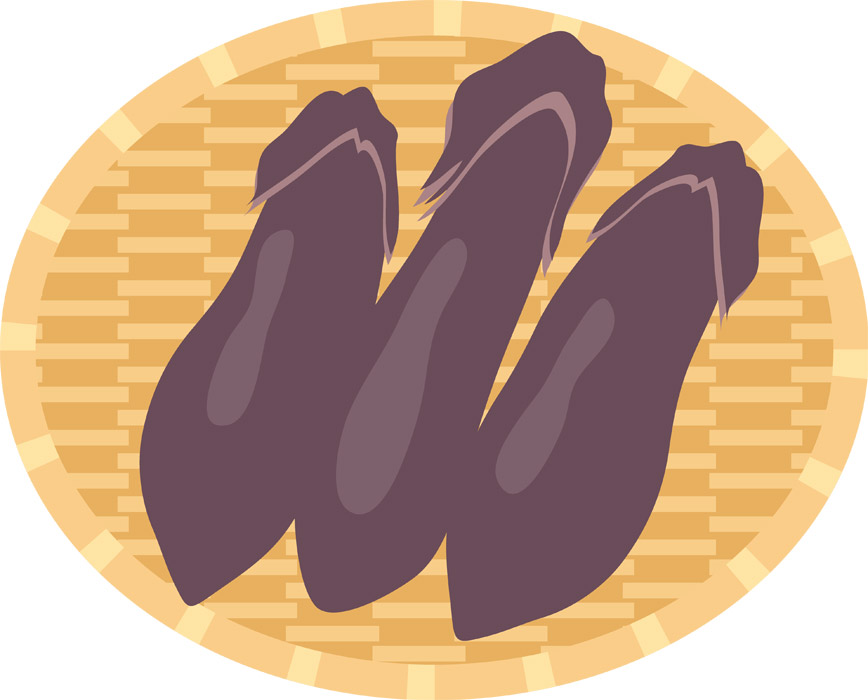


Comments